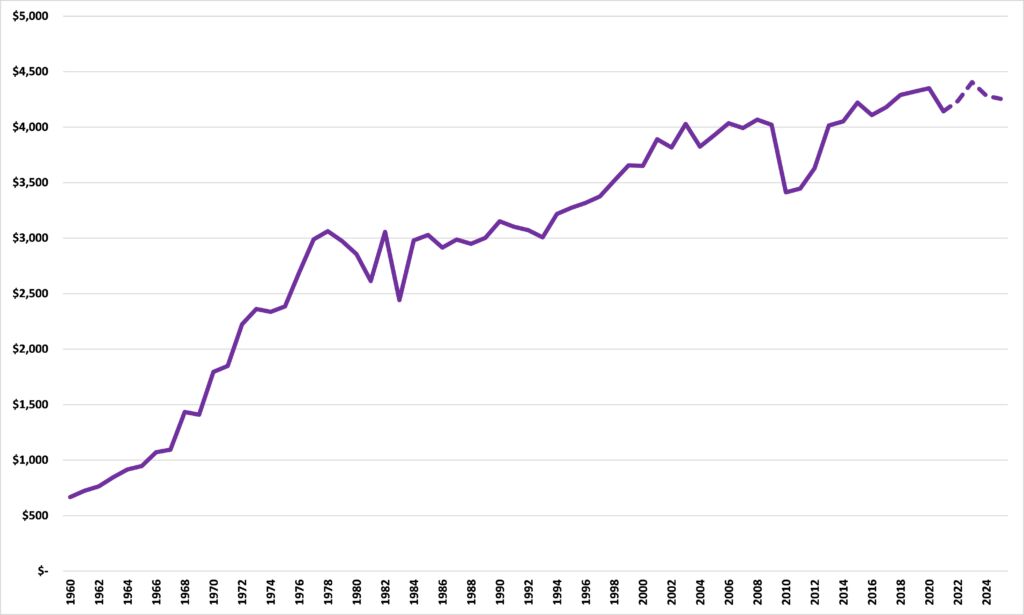The Surplus: Minnesota’s government spending is already historically high
On Dec. 7, Minnesota Management and Budget (MMB) released its budget forecast for Fiscal Year 2022-23, which foresaw a $7.746 billion projected surplus. This immediately sparked a debate about what should be done with that money.
For a number of reasons, it should be given back to the people who earned it — ordinary, hard working Minnesotans — via tax cuts.
State government spending is already historically high
One reason is that Minnesota’s state government is already spending at historically high levels.
Figure 1 shows annual General Fund spending from 1960 to 2020 and forecasts for 2021 to 2025, adjusted for inflation in 2021 dollars. In 2020, Minnesota’s state government spent $4,350.61 for every state resident. This was the highest amount on record and was 5.9 percent higher than in 2016.
Figure 1: Per capita General Fund spending, 1960 to 2025 (2021 USD)

We do see a sharp fall in real terms in per capita state government spending of 4.8 percent from 2020 to 2021. That, however, is driven less by falling nominal spending — this is forecast to fall by just 0.6 percent — than by surging inflation. The average of the monthly numbers for the Consumer Price Index for January to November 2021 is 4.4 percent higher than the average for the year 2020, a rate faster than the annual increase in any year since 1990. Even so, the per capita total for state government spending in 2021 — $4,143.15 — is still higher than in any year before 2017.
Looking beyond 2021, these elevated levels of per capita government spending persist. From 2021’s trough, there is a strong rebound to a new record high in 2023, followed by a decline which still leaves per capita government spending higher in real, inflation-adjusted terms, than at any time before 2018.
Minnesota’s state government is awash with your cash already. Those who claim that even more is needed to solve various social ills have to explain why the current avalanche of cash isn’t doing so. The surplus should stay with the people who earned it.